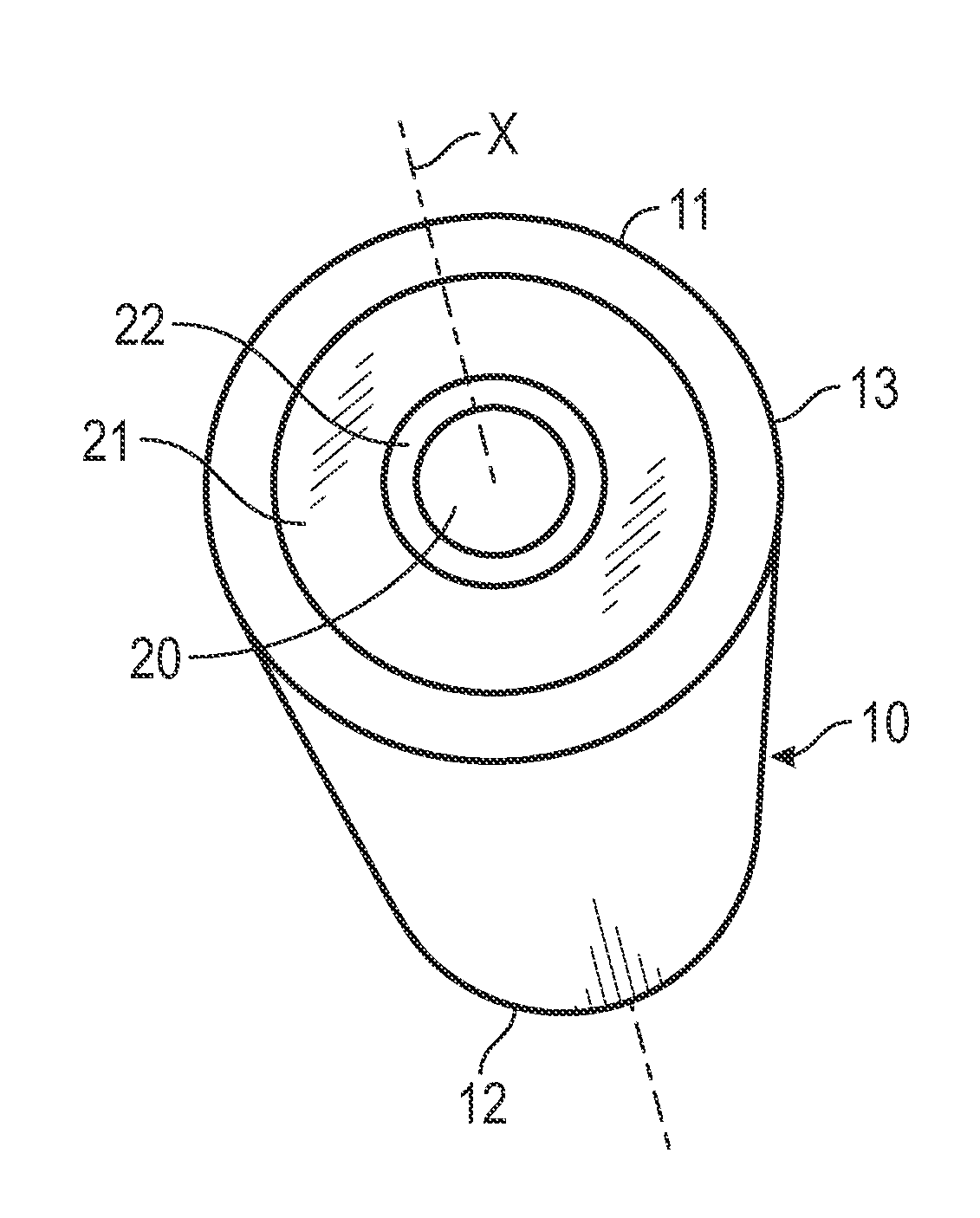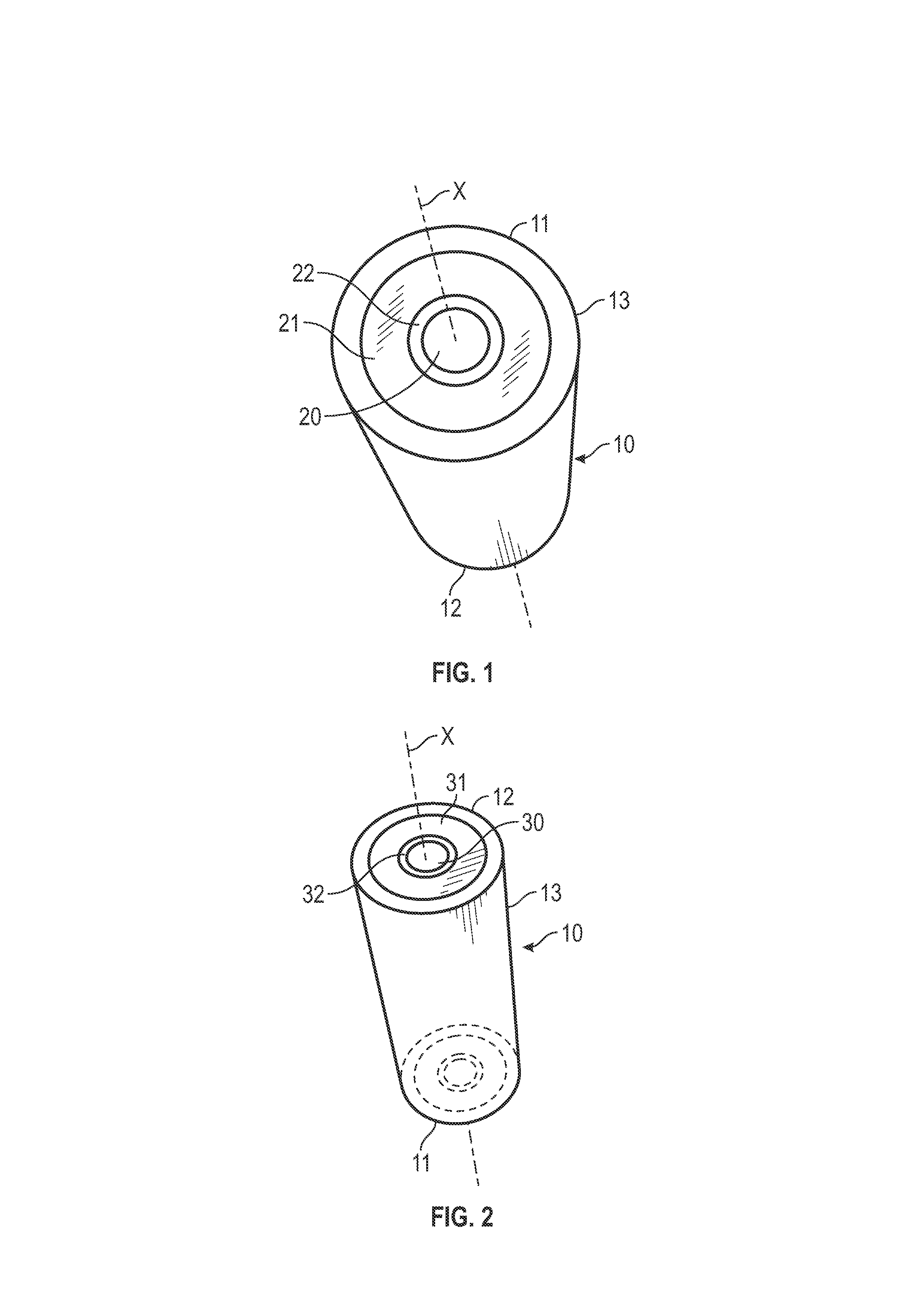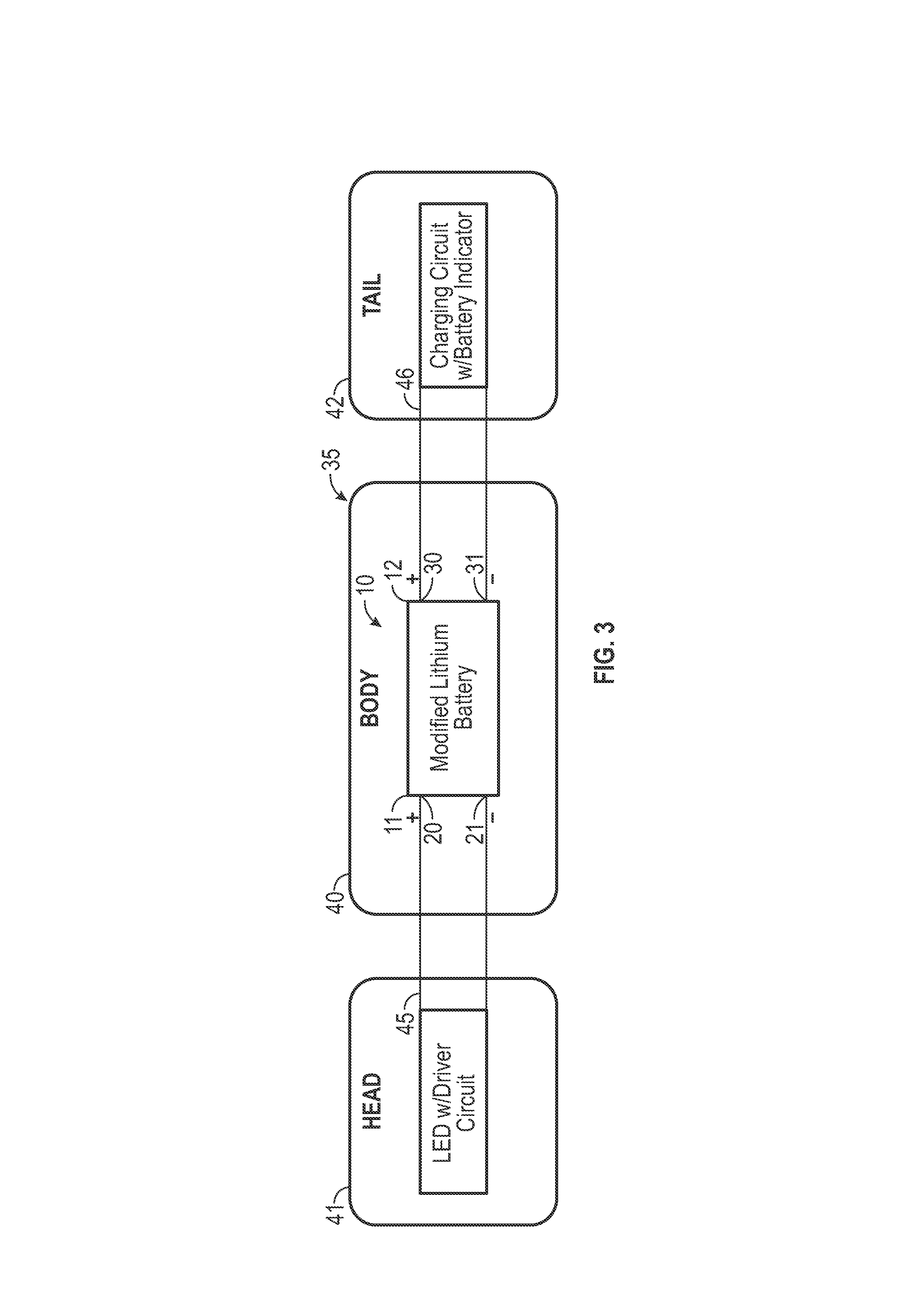Battery and method of use
a battery and circuit technology, applied in the field of batteries and battery circuits, can solve the problems of increasing the cost of electronic devices, adding extra weight, inconvenient and cumbersome removal or replacement of batteries,
- Summary
- Abstract
- Description
- Claims
- Application Information
AI Technical Summary
Benefits of technology
Problems solved by technology
Method used
Image
Examples
Embodiment Construction
[0013]Turning now to the drawings, in which like reference characters indicate corresponding elements throughout the several views, attention is first directed to FIGS. 1 and 2 in which there is seen a battery 10 constructed and arranged in accordance with the principle of the invention. Battery 10 is elongate and cylindrical in shape, has opposed ends 11 and 12, and is symmetrical along its central, longitudinal axis X extending centrally through battery 10 from end 11 to end 12. The internal workings of battery 10 are housed within a metal or plastic case 13, which extends along the length of battery 10 from end 11 to end 12. End 11 of battery 10 as illustrated in FIG. 1 is formed with a positive terminal denoted at 20 and a negative terminal denoted at 21, and end 12 of battery 10 as shown in FIG. 2 is formed with a positive terminal denoted at 30 and a negative terminal denoted at 31. Positive and negative terminals 20 and 21 are located at end 11 of battery 10, and positive and...
PUM
 Login to View More
Login to View More Abstract
Description
Claims
Application Information
 Login to View More
Login to View More - R&D
- Intellectual Property
- Life Sciences
- Materials
- Tech Scout
- Unparalleled Data Quality
- Higher Quality Content
- 60% Fewer Hallucinations
Browse by: Latest US Patents, China's latest patents, Technical Efficacy Thesaurus, Application Domain, Technology Topic, Popular Technical Reports.
© 2025 PatSnap. All rights reserved.Legal|Privacy policy|Modern Slavery Act Transparency Statement|Sitemap|About US| Contact US: help@patsnap.com



